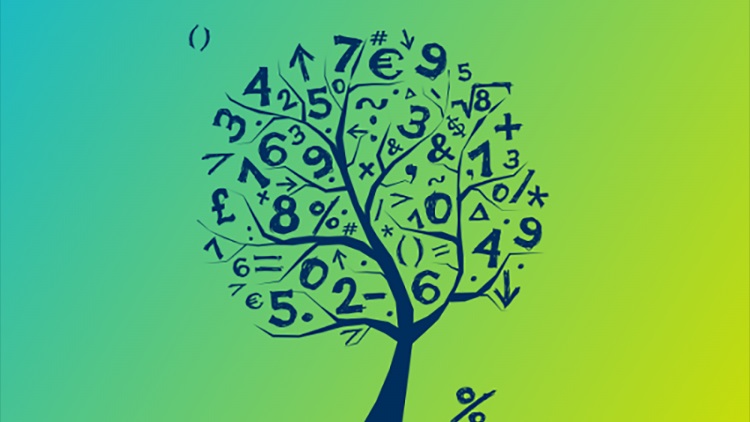
Gaussian Elimination: Solving Linear Equations with Matrix Method
If you are a mathematics or engineering student, a science or technology professional, or anyone interested in understanding matrix methods for solving linear equations, you may have come across the term "Gaussian elimination". Gaussian elimination is a powerful method for solving systems of linear equations, widely used in mathematics, engineering, and science. In this article, we will provide an overview of Gaussian elimination, its working, advantages and limitations compared to other matrix methods, and its applications in science and engineering. We will also explore recent developments in Gaussian elimination research and its implementations.
What is Gaussian elimination method?
Gaussian elimination is a matrix method used to solve systems of linear equations. A system of linear equations is a set of equations with multiple variables, where the solution is a set of values that satisfy all equations simultaneously. The Gaussian elimination method involves transforming the system of linear equations into an equivalent triangular system, where the variables can be solved using back substitution. The triangular system has the form:
a11x1 + a12x2 + ... + a1nxn = b1
0 + a22x2 + ... + a2nxn = b2
0 + 0 + ... + annxn = bn
where aij and bi are constants, and xi are the variables.
How does Gaussian elimination work to solve linear equations?
Gaussian elimination works by performing a sequence of elementary row operations on the augmented matrix, which is obtained by appending the right-hand side of the system of linear equations to the coefficient matrix. The elementary row operations include:
- Interchanging two rows
- Multiplying a row by a nonzero constant
- Adding a multiple of one row to another row
The goal of these operations is to transform the augmented matrix into an equivalent triangular matrix, where the variables can be solved using back substitution. The back substitution involves solving for the variables starting from the last row and working upwards.
What are the advantages and disadvantages of Gaussian elimination compared to other matrix methods?
Gaussian elimination has several advantages over other matrix methods for solving linear equations:
- It is a direct method that provides an exact solution, unlike iterative methods that provide an approximate solution.
- It can handle large systems of linear equations efficiently, using row reduction techniques and partial pivoting.
- It can be extended to solve other matrix problems, such as matrix inversion and computing determinants.
However, Gaussian elimination also has some limitations:
- It can be computationally expensive for very large systems of linear equations, requiring O(n^3) operations.
- It may encounter numerical stability issues for ill-conditioned matrices, leading to round-off errors and loss of precision.
- It may require pivoting to avoid division by zero or to reduce the effect of round-off errors.
What are the applications of Gaussian elimination in science and engineering?
Gaussian elimination has numerous applications in science and engineering, where systems of linear equations arise frequently. Some examples of its applications include:
- Circuit analysis: Gaussian elimination can be used to solve complex electrical circuits with multiple nodes and branches.
- Structural analysis: Gaussian elimination can be used to analyze the stresses and strains in complex structures, such as bridges and buildings.
- Optimization: Gaussian elimination can be used to solve optimization problems, such as linear programming and quadratic programming.
- Computer graphics: Gaussian elimination can be used to transform 3D objects in computer graphics, such as rotating and scaling.
A case study by NASA found that Gaussian elimination was essential for solving the equations involved in designing the flight path of the Apollo 11 mission to the moon. This demonstrates the importance of Gaussian elimination in real-world applications.
What is pivoting in Gaussian elimination and how does it help?
Pivoting is a technique used in Gaussian elimination to avoid division by zero or to reduce the effect of round off errors. It involves rearranging the rows of the coefficient matrix to ensure that the pivot element is the largest absolute value in the column. This ensures that the division in the elimination process is stable and avoids large rounding errors. There are two types of pivoting:
1. Partial pivoting: In this method, the largest element in the current column is selected as the pivot element and then the rows are interchanged. This ensures that the pivot element is the largest absolute value in the column.
2. Complete pivoting: In this method, the largest element in the entire matrix is selected as the pivot element and then the rows and columns are interchanged. This ensures that the pivot element is the largest absolute value in the entire matrix.
Pivoting can significantly improve the stability and accuracy of the Gaussian elimination method. However, it also increases the computational complexity and may not always be necessary. In some cases, the use of pivoting may lead to a slower algorithm than non-pivoting methods.
Recent developments in Gaussian elimination research have focused on improving its efficiency and stability. One promising approach is the use of parallel algorithms that can exploit the power of modern multicore processors and graphics processing units (GPUs). Another area of research is the development of randomized algorithms that can solve large-scale systems of linear equations more efficiently than traditional Gaussian elimination methods.
Conclusion
In conclusion, Gaussian elimination is a powerful method for solving systems of linear equations using matrix operations. It is widely used in mathematics, engineering, and science due to its simplicity and versatility. The method works by reducing the matrix to an upper triangular form through a series of elimination steps. Pivoting is a technique used to avoid division by zero or reduce the effect of round-off errors. It involves rearranging the rows of the coefficient matrix to ensure that the pivot element is the largest absolute value in the column. Despite its limitations, Gaussian elimination remains an important tool for solving linear equations and recent research has focused on improving its efficiency and stability.
Mathematics

